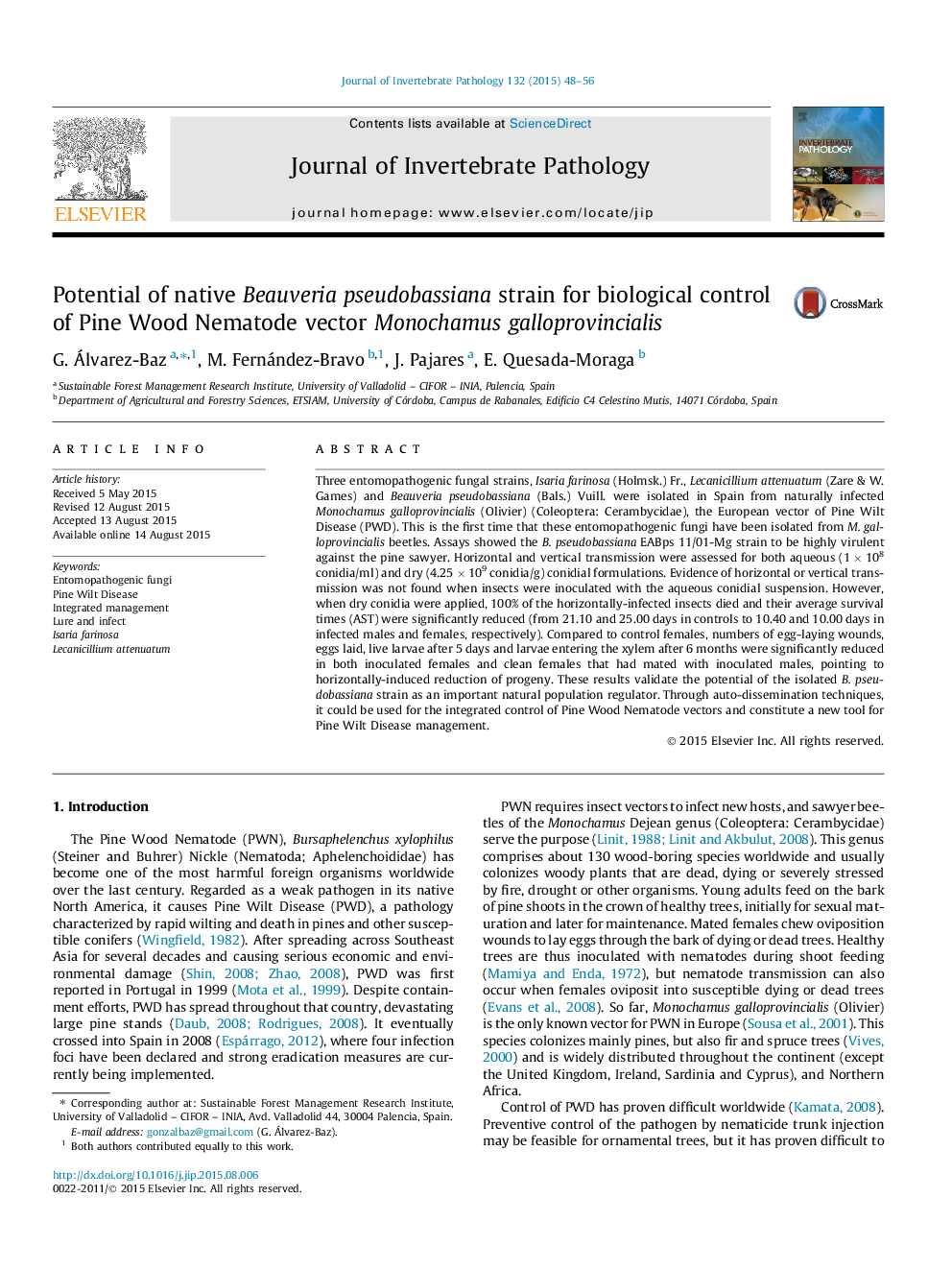| Article ID | Journal | Published Year | Pages | File Type |
|---|---|---|---|---|
| 6389368 | Journal of Invertebrate Pathology | 2015 | 9 Pages |
â¢First report of B. pseudobassiana, I. farinosa and L. attenuatum from this insect.â¢B. pseudobassiana proved highly virulent against M. galloprovincialis.â¢B. pseudobassiana horizontal transmission and reduction of progeny shown.â¢Optimal preparation and dosage reported for potential biological control.
Three entomopathogenic fungal strains, Isaria farinosa (Holmsk.) Fr., Lecanicillium attenuatum (Zare & W. Games) and Beauveria pseudobassiana (Bals.) Vuill. were isolated in Spain from naturally infected Monochamus galloprovincialis (Olivier) (Coleoptera: Cerambycidae), the European vector of Pine Wilt Disease (PWD). This is the first time that these entomopathogenic fungi have been isolated from M. galloprovincialis beetles. Assays showed the B. pseudobassiana EABps 11/01-Mg strain to be highly virulent against the pine sawyer. Horizontal and vertical transmission were assessed for both aqueous (1Â ÃÂ 108Â conidia/ml) and dry (4.25Â ÃÂ 109Â conidia/g) conidial formulations. Evidence of horizontal or vertical transmission was not found when insects were inoculated with the aqueous conidial suspension. However, when dry conidia were applied, 100% of the horizontally-infected insects died and their average survival times (AST) were significantly reduced (from 21.10 and 25.00Â days in controls to 10.40 and 10.00Â days in infected males and females, respectively). Compared to control females, numbers of egg-laying wounds, eggs laid, live larvae after 5Â days and larvae entering the xylem after 6Â months were significantly reduced in both inoculated females and clean females that had mated with inoculated males, pointing to horizontally-induced reduction of progeny. These results validate the potential of the isolated B. pseudobassiana strain as an important natural population regulator. Through auto-dissemination techniques, it could be used for the integrated control of Pine Wood Nematode vectors and constitute a new tool for Pine Wilt Disease management.
Graphical abstractDownload full-size image
